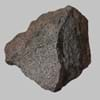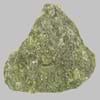Definition
Latite is an igneous, volcanic rock, with aphanitic-aphyric to aphyric-porphyritic texture
During the impact melted material forming a breccia containing glass and crystal or lithic fragments together form Suevite rock.
Origin
Italy
Canada, Germany
Discoverer
Unknown
Unknown
Etymology
From the Latin word latium
No etymologies found
Class
Igneous Rocks
Metamorphic Rocks
Sub-Class
Durable Rock, Medium Hardness Rock
Durable Rock, Medium Hardness Rock
Group
Volcanic
Not Applicable
Other Categories
Fine Grained Rock, Opaque Rock
Coarse Grained Rock, Opaque Rock
Texture
Aphanitic to Porphyritic
Earthy
Color
Black, Brown, Colourless, Green, Grey, Pink, White
Black, Brown, Colourless, Green, Grey, Pink
Durability
Durable
Durable
Scratch Resistant
Yes
Yes
Interior Uses
Decorative Aggregates, Entryways, Interior Decoration
Decorative Aggregates, Homes, Interior Decoration
Exterior Uses
As Building Stone, As Facing Stone, Garden Decoration, Office Buildings
As Building Stone, As Facing Stone, Garden Decoration, Office Buildings
Other Architectural Uses
Curbing
Curbing
Construction Industry
As a Flux in the Production of Steel and Pig Iron, As a Sintering Agent in Steel Industry to process Iron Ore, As Dimension Stone, Cement Manufacture, for Road Aggregate, Making natural cement, Manufacture of Magnesium and Dolomite Refractories
As Dimension Stone, Cement Manufacture, for Road Aggregate, Making natural cement, Manufacture of Magnesium and Dolomite Refractories
Medical Industry
Not Yet Used
Not Applicable
Antiquity Uses
Artifacts, Monuments, Sculpture
Artifacts, Monuments, Sculpture
Commercial Uses
An Oil and Gas Reservoir, As a Feed Additive for Livestock, Metallurgical Flux, Soil Conditioner, Source of Magnesia (MgO)
As a Feed Additive for Livestock, Gemstone, Metallurgical Flux, Source of Magnesia (MgO)
Types
Rhomb porphyries
Phyllosilicates, Calcite
Features
Host Rock for Lead
Host Rock for Lead
Archaeological Significance
Famous Monuments
Data Not Available
Data Not Available
Famous Sculptures
Data Not Available
Data Not Available
Formation
Latite is a fine-grained, hard rock which is a type of metasomatite, essentially altered basalt. It forms with or without crystallization, either below the surface as intrusive rocks or on the surface as extrusive rocks.
Suevite is a metamorphic rock consisting partly of melted material, typically forming a breccia containing glass and crystal or lithic fragments, formed during an impact event.
Mineral Content
Alkali feldspar, Biotite, Plagioclase, Pyroxene
Coesite, Quartz, Stishovite
Compound Content
CaO, Cl, MgO
CaO, Carbon Dioxide, MgO
Types of Metamorphism
Burial Metamorphism, Cataclastic Metamorphism
Burial Metamorphism, Cataclastic Metamorphism, Contact Metamorphism, Hydrothermal Metamorphism, Impact Metamorphism, Regional Metamorphism
Types of Weathering
Biological Weathering, Chemical Weathering, Mechanical Weathering
Not Applicable
Types of Erosion
Chemical Erosion, Water Erosion, Wind Erosion
Not Applicable
Grain Size
Fine Grained
Coarse Grained
Fracture
Conchoidal
Uneven
Streak
White
Light to dark brown
Porosity
Very Less Porous
Less Porous
Luster
Subvitreous to Dull
Earthy
Compressive Strength
Not Available
Cleavage
Perfect
Irregular
Toughness
2.7
Not Available
Specific Gravity
2.86
2.86
Transparency
Translucent
Opaque
Density
2.8-2.9 g/cm3
2.8-2.9 g/cm3
Resistance
Heat Resistant, Pressure Resistant
Heat Resistant
Deposits in Eastern Continents
Asia
Not Yet Found
Not Yet Found
Africa
Not Yet Found
Not Yet Found
Europe
Bulgaria
England, France, Germany, Great Britain, Netherlands, Sweden, Switzerland, United Kingdom
Others
Not Yet Found
Not Yet Found
Deposits in Western Continents
North America
USA
Not Yet Found
South America
Not Yet Found
Not Yet Found
Deposits in Oceania Continent
Australia
Not Yet Found
Not Yet Found
All about Latite and Suevite Properties
Know all about Latite and Suevite properties here. All properties of rocks are important as they define the type of rock and its application. Latite belongs to Igneous Rocks while Suevite belongs to Metamorphic Rocks.Texture of Latite is Aphanitic to Porphyritic whereas that of Suevite is Earthy. Latite appears Rough and Suevite appears Banded. The luster of Latite is subvitreous to dull while that of Suevite is earthy. Latite and Suevite are available in black, brown, colourless, green, grey, pink, white colors. The commercial uses of Latite are an oil and gas reservoir, as a feed additive for livestock, metallurgical flux, soil conditioner, source of magnesia (mgo) and that of Suevite are as a feed additive for livestock, gemstone, metallurgical flux, source of magnesia (mgo).










